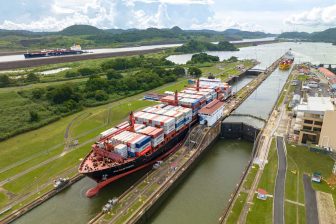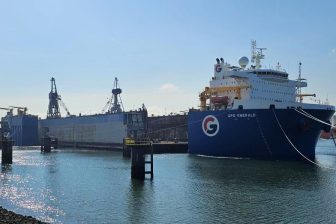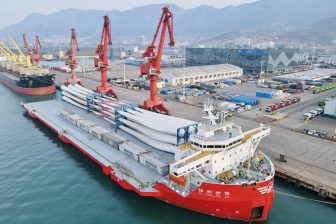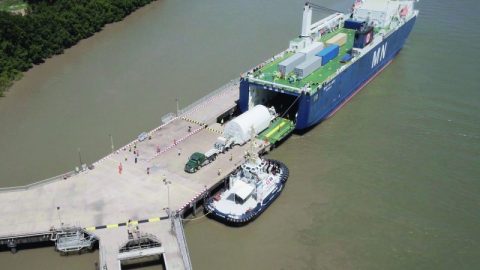
Transport of James Webb Space Telescope: an astronomical challenge
The James Webb Space Telescope is now working one and a half billion kilometres away from Earth, but even on our planet, the telescope had to travel a long way. Preparations for the project began as early as 1996. Since then, the logistical challenges have been significant, according to the EFM Logistics website, the British company responsible for managing the logistics for United States’ National Aeronautics and Space Administration (NASA).
In an article in the ‘The Times’, the company was described as being ‘roadies to the stars’, a pun reflecting EMF Logistics’ previously achieved reputation as a logistics service provider for concert series of acts including Rammstein, Coldplay and Beyoncé, as well as for events such as the Olympic Games and the World Cup. But the company also handles ‘special projects’.
The ‘special projects’ category of course includes the groundbreaking space telescope that photographs galaxies just after the Big Bang. The telescope has already photographed a galaxy that is 13.5 billion years old, which means it is getting close to the Big Bang, since scientists believe that it took place 13.8 billion years ago. The James Webb project earned EFM Logistics a nomination for ‘project of the year’ by international heavy lift media.
Dirt particles
The main protagonist of the logistical operation on Earth was the Space Telescope Transporter for Air, Road & Sea, also known as the STTARS, a container specially developed for the occasion to ensure that as few dirt particles as possible travelled with it during transport. No more than one hundred particles larger than half a micrometre – the width of one hundredth of a human hair – were allowed on board. After all, a speck of dust on the lens of a sunny holiday photo is not much fun, but it is really problematic for a telescope that is supposed to discover the secrets of the universe, and costs over 10 billion US dollars.
As the name of the container suggests, the terrestrial transport of the telescope consisted of an air, road and sea route. A key moment was the transport of the scientific and optical instruments, which were tested extensively at the Johnson Space Centre in Houston and then transferred to Los Angeles by air in 2018. This was done using a military aircraft: a Lockheed C-5 Galaxy, America’s largest transport aircraft, actually intended to carry tanks. The STTARS just barely fitted. At the Northrop Grumman Aerospace Systems manufacturer in Redondo Beach, California, the telescope was completed and once again fully tested. Almost a year ago, the telescope was ready for its big adventure and was loaded back into the STTARS container to be driven behind a semi-truck under police escort through the streets of Los Angeles, to the Naval Weapons Station in Seal Beach. Here and there, employees had to lift traffic lights from crane trucks in order to guide the enormous STTARS underneath.
At the naval base, the French ro/ro ship ‘MN Colibri’ was ready to transport the giant container with its fragile cargo. Indeed, in the framework of international cooperation – the European Space Agency (ESA) and its Canadian counterpart CSA are also involved in the James Webb project – the European rocket “Ariane 5” was allowed to launch the telescope into space. The place of action was therefore the ‘European’ launch base in Kourou, French Guiana.
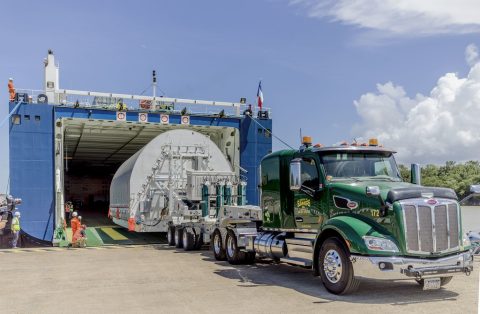
Port inspections
The voyage of the MN Colibri through the Panama Canal, described by EFM Logistics as the ‘last leg of Webb’s long, earthly voyages through the years’, took over two weeks. Before the EFM-chartered MN Colibri could do its work, the logistics company had been responsible for, among other things, numerous surveys and port inspections to assess which ports were suitable for the mega-project. Even for NASA, it was the biggest transport job in history, according to the US space agency, as well as the ‘MN Colibri’ first time going through the Panama Canal.
EFM’s tasks also included arranging for 80 teu of regular shipping containers to carry other goods for the James Webb project, the transport of rocket fuel and eight tube trailers (tanks) of synthetic air from Miami to French Guiana, and the delivery of other essential supplies by air freight. Operations have continued to run smoothly since the launch, which took place last Christmas. For example, so little propellant was consumed to manoeuvre the telescope into orbit that enough gas was left for NASA to forecast that the telescope may be able to function for longer than the projected ten years.
Article translated to English from NT.nl

